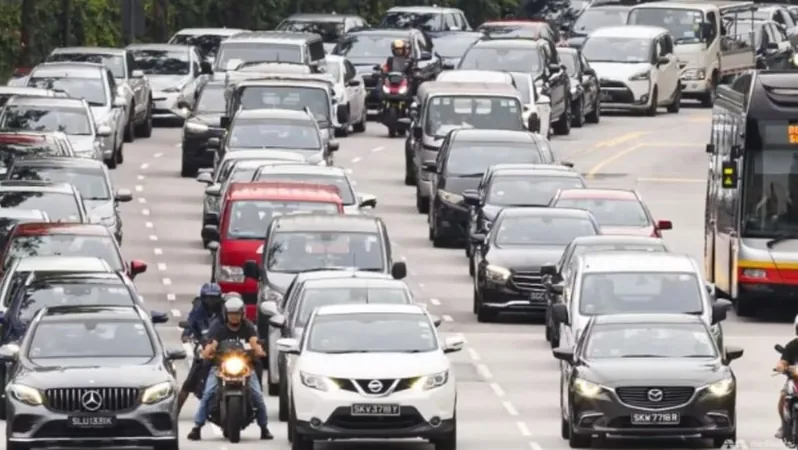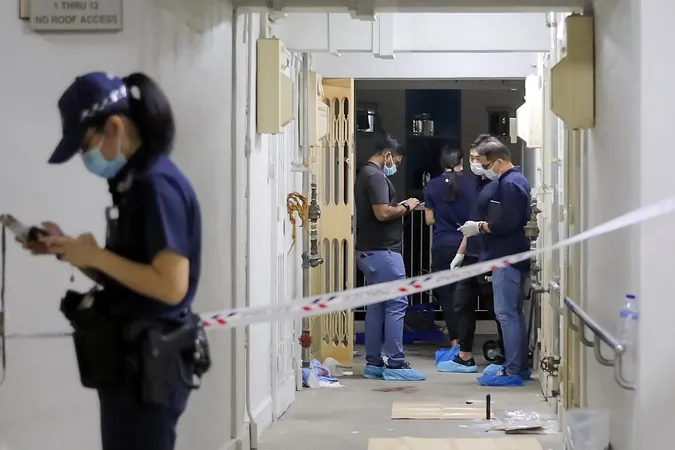
COE Premiums Take a Nosedive: What This Means for Singaporean Drivers
2024-11-06
Author: Nur
SINGAPORE: In a surprising turn of events, Certificate of Entitlement (COE) premiums closed significantly lower across all categories in the latest bidding exercise held on November 6. This marks the second consecutive bidding round where all categories have seen a dip in premiums, raising questions about the implications for potential car buyers and the automotive market at large.
COE Premiums Breakdown Across Categories
For Category A cars, which include vehicles with engine capacities of 1,600cc and horsepower not exceeding 130bhp, premiums dropped to S$99,889 (approximately US$75,110), a decrease from S$102,900 in the previous exercise. Meanwhile, more powerful vehicles in Category B experienced a more substantial drop, with premiums falling to S$108,001 from S$113,890.
The trend continued for commercial vehicles, encompassing goods vehicles and buses, where premiums declined to S$68,340, down from S$72,939. Motorcycles also followed suit, with premiums closing at S$9,089, a drop from S$9,589 last exercise. Open category COEs, which can be used for any vehicle type but are primarily for larger cars, fell to S$109,000 from S$114,700.
Competition Remains Fierce
With a total of 3,661 bids submitted against a quota of 2,681 COEs available, competition remains fierce among buyers. Notably, this bidding exercise is the first since the government revealed plans to progressively inject up to 20,000 additional COEs into the market starting February 2025. This move is likely a response to the evolving landscape of vehicle ownership and usage patterns following the pandemic.
Market Response and Expert Opinions
Industry experts suggest that the anticipated influx of COEs may prompt buyers to hold off on immediate purchases, hoping for further drops in prices. Dealers are bracing for a temporary slump in car sales as potential buyers remain cautious.
Future Traffic Management Improvements
The Land Transport Authority (LTA) explains that the upcoming introduction of the ERP 2.0 system will facilitate better traffic management, allowing for this increase in COE availability. Moreover, shifts in travel patterns, notably enhanced flexible work arrangements, have led to a reduction in private vehicle mileage over the past five years, contributing to the decision.
Historical Context
This strategic change recalls a similar initiative between 1997 and 2003, when an additional 10,500 COEs were introduced following the implementation of the existing ERP system.
Conclusion: A Cautious Future for Buyers?
As Singapore’s automobile landscape evolves, potential buyers should stay informed and consider their options carefully in light of these shifting trends. Will the drop in COE premiums spark a buying frenzy, or will consumers remain cautious as they await further fluctuations? Only time will tell!



 Brasil (PT)
Brasil (PT)
 Canada (EN)
Canada (EN)
 Chile (ES)
Chile (ES)
 España (ES)
España (ES)
 France (FR)
France (FR)
 Hong Kong (EN)
Hong Kong (EN)
 Italia (IT)
Italia (IT)
 日本 (JA)
日本 (JA)
 Magyarország (HU)
Magyarország (HU)
 Norge (NO)
Norge (NO)
 Polska (PL)
Polska (PL)
 Schweiz (DE)
Schweiz (DE)
 Singapore (EN)
Singapore (EN)
 Sverige (SV)
Sverige (SV)
 Suomi (FI)
Suomi (FI)
 Türkiye (TR)
Türkiye (TR)